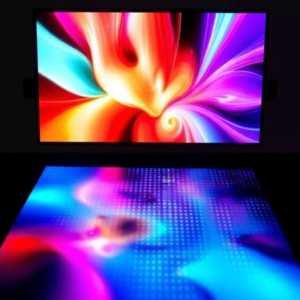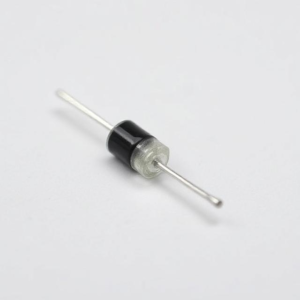Advanced Display Technologies: OLED and MicroLED – An Easy Explanation
Display technology has come a long way, offering better colors, sharper images, and thinner screens. Two of the most exciting advancements in display technology today are OLED (Organic Light Emitting Diode) and MicroLED. These technologies are used in everything from smartphones and TVs to wearables and virtual reality systems.

1. What is OLED?
OLED stands for Organic Light Emitting Diode. It’s a display technology that uses a special type of organic material that emits light when an electric current passes through it.
Key Features of OLED:
- Self-Emitting: Unlike older technologies (like LCD), OLED displays don’t need a backlight. Each pixel in an OLED screen generates its own light.
- Deep Blacks: Since OLED pixels can turn off completely, they produce perfect black colors. This leads to much better contrast and overall picture quality.
- Thinner and Flexible: OLED screens are very thin because they don’t need bulky backlighting. In fact, they can even be made flexible, which is why we see things like curved screens and foldable phones.
- Wide Viewing Angles: OLED screens offer excellent colors and brightness, even when you’re looking at the screen from the side.
How OLED Works:
- Pixels: Each pixel is made up of organic materials that light up when electricity is applied. These pixels are combined to form the image you see on the screen.
- Layers: An OLED display is made up of several layers, including a layer of organic compounds that emits light when current flows through it.
2. What is MicroLED?
MicroLED is another advanced display technology, but it works differently from OLED. Instead of using organic materials, MicroLED uses tiny, inorganic LEDs (light-emitting diodes) as individual pixels.
Key Features of MicroLED:
- No Need for Backlighting: Like OLED, MicroLED displays are self-emitting, meaning each pixel creates its own light. This allows for thinner, lighter screens.
- Bright and Vibrant Colors: MicroLED displays can produce extremely bright colors, making them perfect for bright environments and high-definition displays.
- Durability and Longevity: Since MicroLED uses inorganic materials, it tends to last longer than OLED, which can degrade over time (especially in terms of brightness and color accuracy).
- Scalability: MicroLED displays can be used for large displays, like massive TVs or digital billboards. The technology can easily be scaled to create different screen sizes by adding or removing MicroLEDs.
How MicroLED Works:
- Tiny LEDs: Each pixel is made from microscopic LEDs that produce their own light. These tiny LEDs are placed very closely together to create high-resolution displays.
- No Organic Materials: Unlike OLED, MicroLED uses inorganic materials, which makes the technology more stable and durable over time.
3. Comparison: OLED vs. MicroLED
| Feature | OLED | MicroLED |
|---|---|---|
| Pixel Type | Organic materials that emit light. | Tiny, inorganic LEDs that emit light. |
| Black Levels | Perfect blacks (individual pixels turn off). | Great blacks (but not as perfect as OLED). |
| Brightness | High, but can degrade over time. | Extremely bright and stable over time. |
| Durability | Can degrade with time (especially in brightness and color). | More durable and longer-lasting. |
| Thickness | Very thin and flexible. | Also thin, but can be bulkier in some designs. |
| Viewing Angles | Excellent. | Excellent. |
| Cost | Generally more expensive. | Can be more expensive, especially for larger displays. |
4. Advantages of OLED and MicroLED
OLED Advantages:
- Better Contrast and Colors: OLED displays offer the best contrast, with true blacks and vibrant colors.
- Flexibility: OLED screens can be curved or folded, allowing for unique designs like foldable phones or curved TVs.
- Thinness: OLED screens are extremely thin, which makes them perfect for slim, lightweight devices.
MicroLED Advantages:
- Brightness and Clarity: MicroLED displays can be brighter and are ideal for use in well-lit rooms or outdoor environments.
- Longer Lifespan: MicroLED doesn’t suffer from the same degradation issues as OLED, meaning it has a longer lifespan.
- Customization: Because the technology uses tiny, individual LEDs, MicroLED screens can be easily scaled to larger sizes without losing quality.
5. Applications of OLED and MicroLED
OLED Applications:
- Smartphones and TVs: OLED is used in many high-end smartphones and premium televisions due to its excellent picture quality and flexibility.
- Wearables: OLED is used in smartwatches because it’s thin, flexible, and energy-efficient.
- Virtual Reality (VR): OLED displays are popular in VR headsets due to their ability to deliver vibrant colors and high refresh rates.
MicroLED Applications:
- Large TVs and Digital Billboards: MicroLED is great for big screens because the technology can easily scale up to large sizes without losing quality.
- High-End Displays: MicroLED can be used in high-performance applications where brightness, color accuracy, and longevity are critical, such as in professional monitors and large-scale installations.
- Flexible and Modular Displays: MicroLED technology can be used to create modular screens, where multiple smaller screens are combined to form one large display.
Conclusion
Both OLED and MicroLED are advanced display technologies that offer impressive picture quality, but they have different strengths. OLED is known for its perfect black levels, vibrant colors, and flexibility, making it ideal for smartphones, TVs, and wearables. MicroLED, on the other hand, shines with its brightness, durability, and scalability, making it perfect for large, high-performance displays. Each technology has its place, and as both continue to improve, the future of displays looks brighter than ever.











